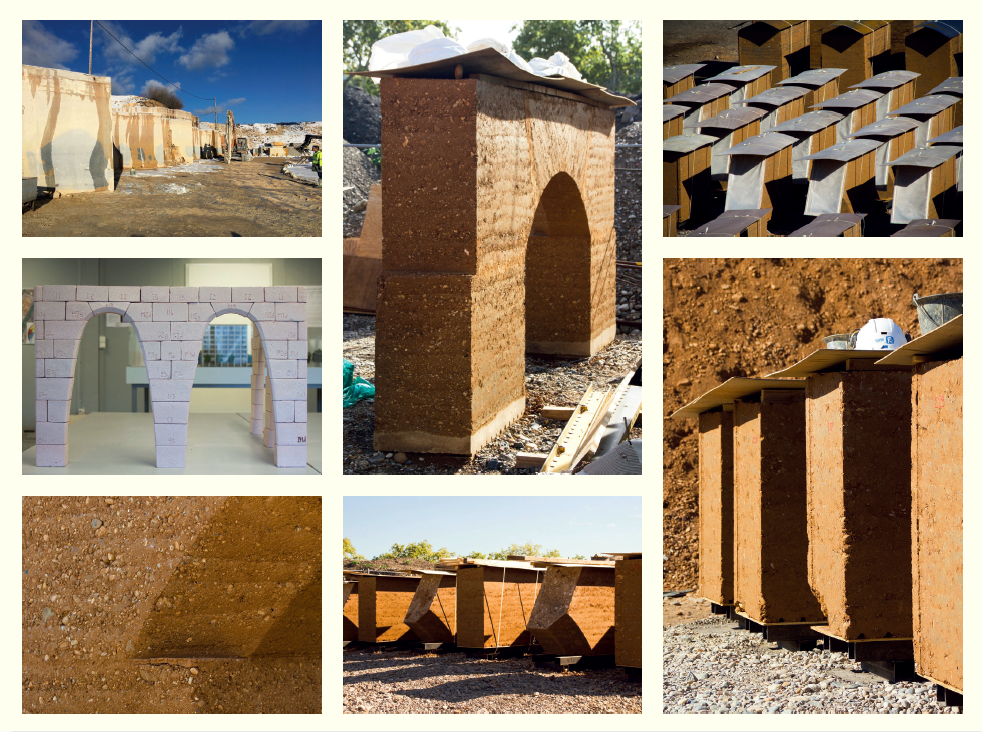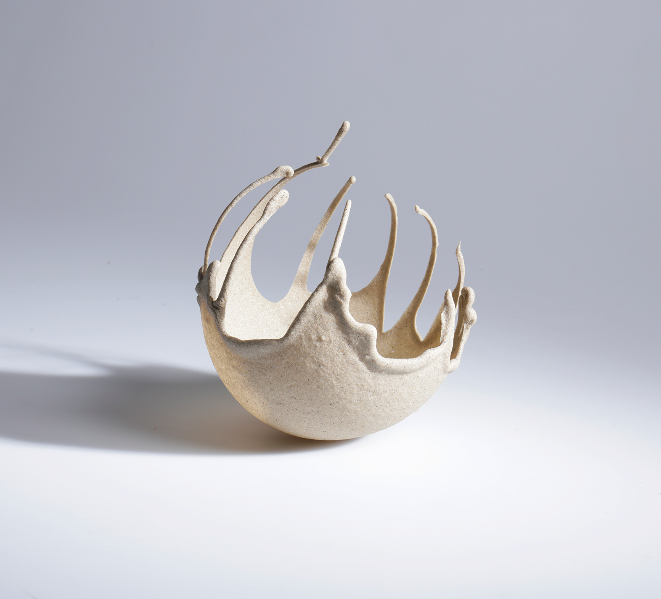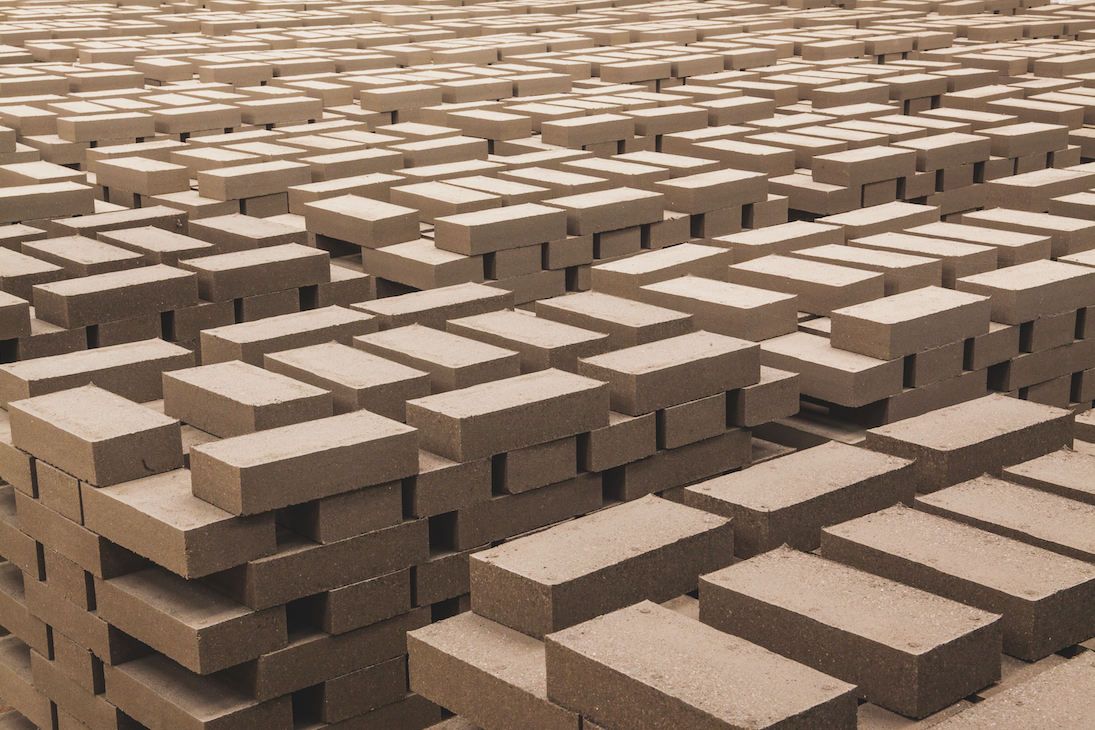Clément Vergély: Arising from the earth
A renewed interest in France in rammed earth architecture has been observed for some time now. And one of the most emblematic constructions in the recent history of rammed earth technique is about to be completed in Lyon by architect Clément Vergély. It is an office building held up without cement or lime. This feat could well mark the beginning of a broader shift to earthen construction, despite a regulatory obstacle course.
This article written by Adrien Poullain has been published in AA 435 issue —Matters and Materials— still available on our online store.
In the joint development zone of the ZAC Lyon Confluence, at the very heart of the city, L’Orangerie proudly rises upon its 14 earthen arches, amidst a vast forest of concrete buildings. Its 1,000 sqm of offices are part of the B2 block project, won by Clément Vergély’s office, partnered with the Swiss practice Diener & Diener in an international competition held in 2015. The master plan required the construction of a small, low carbon footprint building at the heart of each city block in the district. After developing several prototypes, the architects chose to build with local materials and in accordance with local traditions. “I do not think one can build with a lower carbon footprint than that. It is almost entirely made of materials from around,” Vergély proudly asserts. The substructures and coping are comprised of blocks of Hauteville stone cut from a quarry 50 km from the site. Floors and staircases are made of pine from the forest of the Vosges Mountains 300 km from Lyon. The rammed earth façades were formed with soil from excavations of another site 30 km away as the soil onsite was too polluted for use in construction. Only the foundations and the concrete slab were composed of reinforced concrete.
“During the competition, we designed these imposing arches without knowing how the material would react and we later realised that the design was at the limits of the physical characteristics of rammed earth, which works by compression. So we had to choose a system of large, prefabricated blocks, exactly as we would have done with solid stone blocks. There is no tensile stress and no deformation in the arches,” the architect explains.
The 80-cm width of the perimeter walls on the ground floor gradually become thinner at each level, creating steps to receive the floor beams. These walls bear all the structural weight with the exception of that borne by the wooden posts placed at midspan of the floors. The walls are left bare, free of any unnecessary additions, whether cladding, rain barrier, vapour barrier, coating, paint, etc. Rammed earth naturally regulates interior humidity and temperature while offering unequalled acoustical comfort, thanks to its sound absorbing and attenuating qualities.
However, dealing with the regulations was not a simple task. While acquiring certification for thermal and fire safety characteristics was not a problem, this was definitely not the case for the structure.



Up: third level plan / Down: South elevation.
—
Read the full article in AA 435 issue —Matters and materials— available on our online store.






